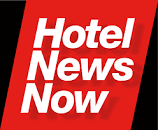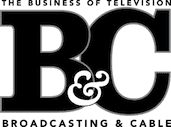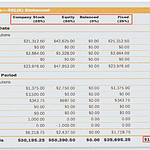I have sent a holiday haiku as an e-card to clients, colleagues and contacts since 2009.
Click on the year to see haiku e-cards and a related image.
If a similarly customized holiday greeting appeals to you, please contact me at Janet@JanetLFalk.com, set an appointment here or call me at 212.677.5770.
2023
Light a tall candle.
Watch it glow in the window.
Away, dark winter!
Was 2023 wonderful or dreadful? Or something in between?
Time to move ahead and fix our gaze on a bright tomorrow.
Wishing you and yours a holiday of peace, music and the warmth of shared celebrations.
In anticipation of the 15th anniversary of my practice, here is my gift to you: an e-book to help you maximize your attendance at conferences in 2024.
In appreciation of the clients and colleagues who worked with me this year, I have made a donation to Braver Angels, a cross-partisan volunteer-led movement to overcome our nation’s partisan divide.
2022
‘Neath the golden moon
Stately stand evergreen trees
Hear the wind’s music.
Let’s embrace winter’s delights.
Best wishes to you, your family and your team.
In appreciation of the clients and colleagues who worked with me this year, I have made a donation to a nonprofit in New York that supports people with Alzheimer’s disease and their families.
Here’s to the warmth of the holiday season and the promise of the new year 2023.
2021
Evening performance:
Bustling wind, frantic snowflakes
Peaceful, smiling moon.
Sending warmest of wishes to you, your family and your team.
In appreciation of the clients and colleagues who made this year my best ever, I have made donations to nonprofits in New York and Chicago that support educational opportunities for young women.
Here’s to the magic of the holiday season and the excitement of the new year 2022.
2020
How dark was this year,
Clouded by illness and loss.
Welcome, sun of hope.
With warm thoughts for your personal health, your family and your team.
In thanks for the wonderful care of my mother, age 90, who recovered from COVID-19, I have made a donation to a local hospital.
Consider how you may acknowledge your appreciation of clients and partners in collaboration with a donation to a nonprofit organization, as we all look ahead to a brighter 2021.
2019
All faiths celebrate
Winter solstice traditions.
Light reclaims the dark.
Are you glad or sad to see 2019 end?
Did it bring new clients, new successes or new struggles?
Together, let’s make 2020 memorable.
Here’s to the promise of the New Year.
2018
Sing a song of snow.
A white coat gently glistens
and brings joyful peace.
Soon 2018 will be a memory, of wins and losses, lessons learned and workshops taught.
Here’s to following new paths, to your success and to the promise of the New Year.
2017
In the dark of night
A sudden glimpse of bright light
Sparks joy in my heart.
Thanks to your support, 2017 was one of my best years in business.
May you gather strength from your success and climb ever higher in the months ahead.
This card was cited by PR Daily as one of its top PR holiday greeting cards as a lesson of keep it short and sweet.
2016
In the wintry dark
Stars sing brilliant melodies.
Hope and joy for all.
Olympics, elections and my busted foot. Let’s put 2016 in a box, share the warmth of the holiday season and dance ahead to a new year.
Here’s to your success in 2017.
2015
Snow blankets the street
A cushion of sweet silence.
Peace, all the way home.
May the warmth of the holiday season fill your heart.
To your success in 2016. Cheers!
2014
Ring in the New Year!
Peace, love, music, art, snowflakes.
Share them everywhere.
Another memorable year!
Let’s celebrate the spirit of the holiday season.
Here’s to success in 2015.
2013
Tall, from a distance,
Snowy tree stands in silence
My heart fills with peace.
What a year this has been!
With warm wishes for the holiday season
and for success in 2014.
2012
Snowflake, dance with me
Raise arms to the winter sky
Embrace the moment.
Wishing you, your team and your clients
a joyous season and
ever more success in 2013.
2011
As candles flicker,
Moonbeams glide past the snowman
In gentle rhythm.
With warm wishes for the holiday season
and for growth and success in 2012.
2010
The New Year’s promise:
hope, joy, peace, love, memories
and gentle snowflakes.
Have an even more successful 2011.
2009
The quiet magic
brought by the first winter snow
inspires and awes.
Wishing you, your team and your family
a joyous season and
ever more success in the New Year.
 More than 80% of hotel revenue is generated by credit card usage each year, so monitoring credit card transaction fees and charges should be a priority for hotel management.
More than 80% of hotel revenue is generated by credit card usage each year, so monitoring credit card transaction fees and charges should be a priority for hotel management. A leading broadcasting industry magazine published an article on its website. Perhaps advertisers, who are often skittish that adverse publicity might affect them also, contacted the network to voice their displeasure with this news.
A leading broadcasting industry magazine published an article on its website. Perhaps advertisers, who are often skittish that adverse publicity might affect them also, contacted the network to voice their displeasure with this news. When a contributor to The TODAY Show mentioned at a social event that an upcoming segment would focus on trends combining gardens and technology, I suggested a website as an example.
When a contributor to The TODAY Show mentioned at a social event that an upcoming segment would focus on trends combining gardens and technology, I suggested a website as an example.  Presidential candidate John McCain announced on the morning of June 23, 2008 that he would create a national competition to promote research on alternative automobile batteries.
Presidential candidate John McCain announced on the morning of June 23, 2008 that he would create a national competition to promote research on alternative automobile batteries. Dialogues, a customized newsletter that financial advisors of Smith Barney ordered for their clients, featured four articles on diverse personal financial planning topics. I drafted
Dialogues, a customized newsletter that financial advisors of Smith Barney ordered for their clients, featured four articles on diverse personal financial planning topics. I drafted